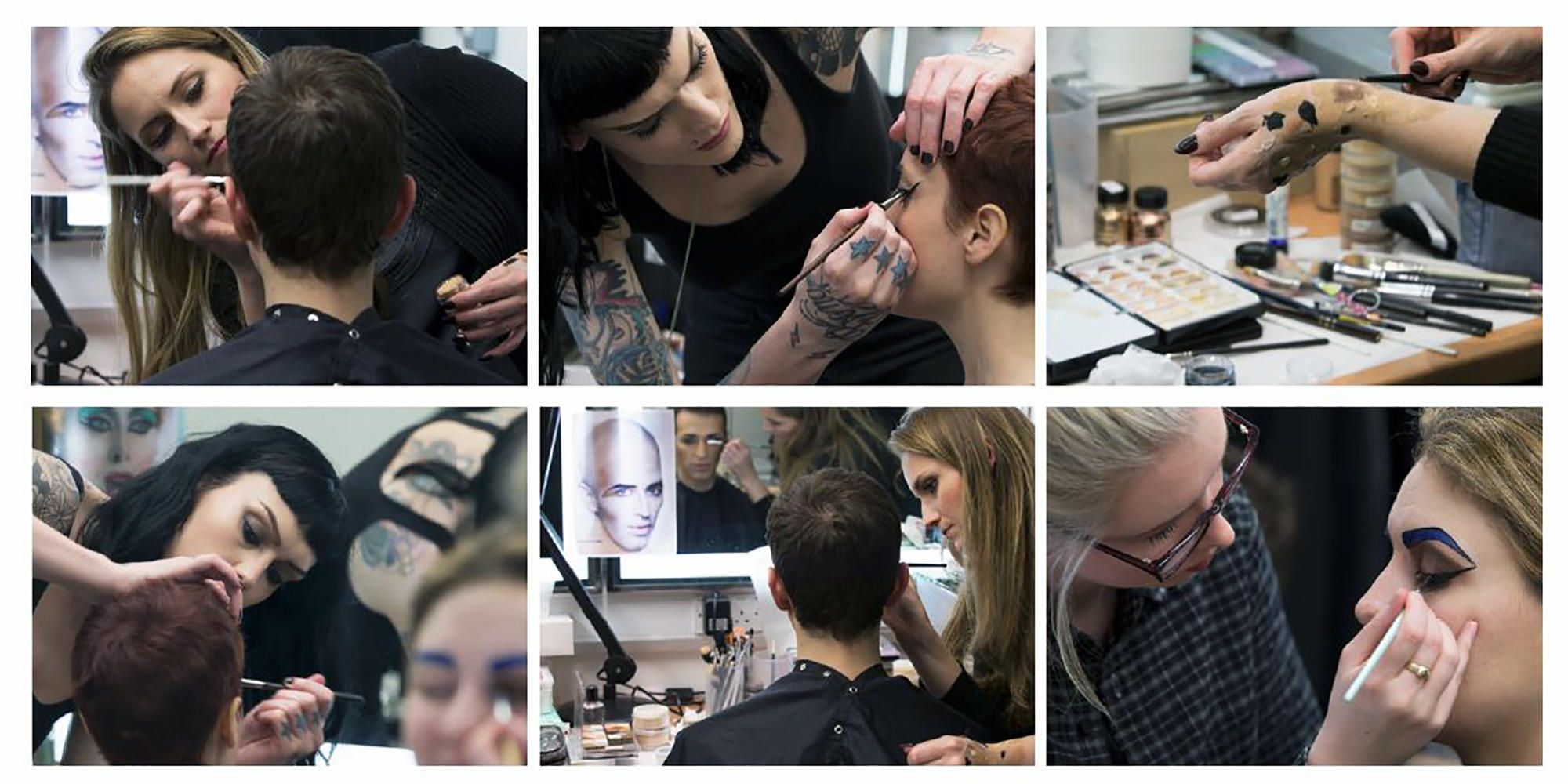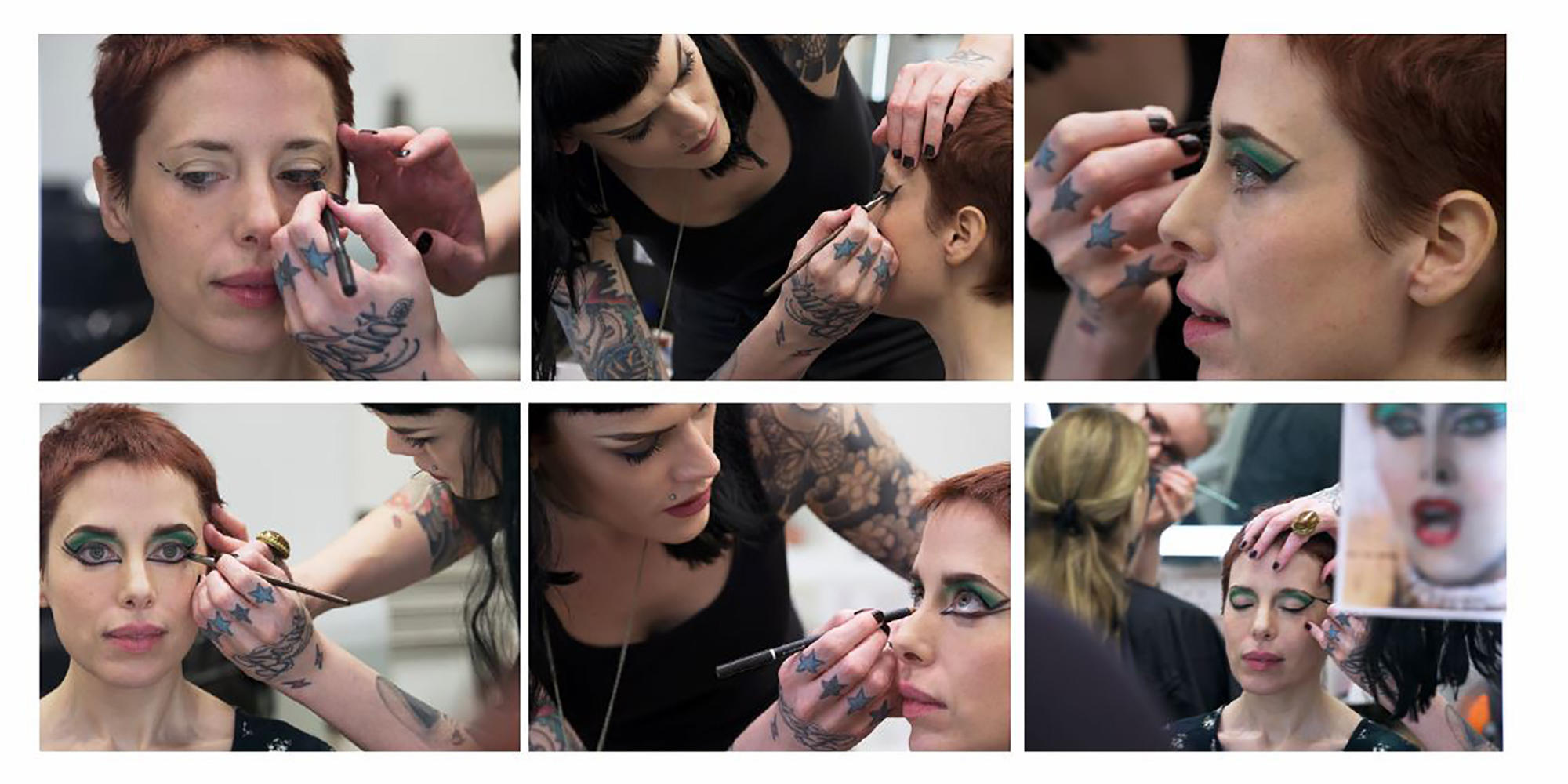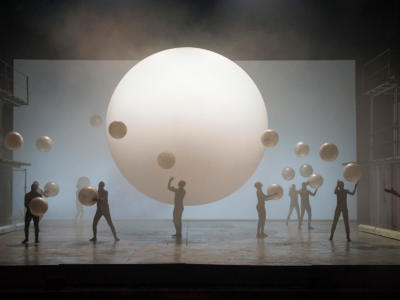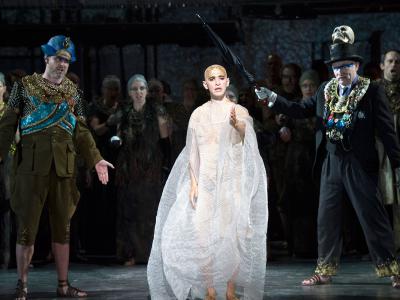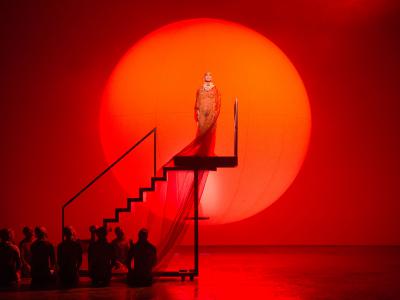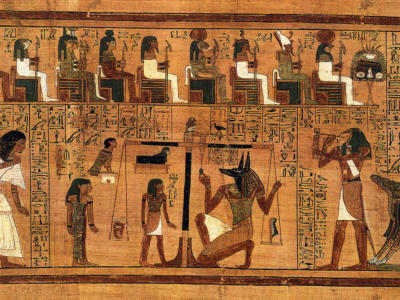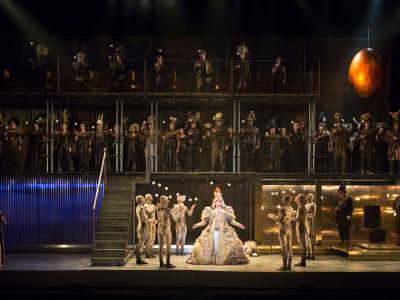Explore Akhnaten: The Make-up
The History of Theatre Make-up
Throughout recorded history make-up has been used for protection, transformation and beautification. From the geometric beauty of Japanese Kabuki face paint to the Rosy Cheeks of a Pantomime dame, it has also been an important element of narrative performance around the world for centuries.
Make-up is powerful tool in storytelling, as it represents not just a physical costume change, but a change of the self. Make-up is transient as every night the process of creating characters through colours, powders and products is destroyed by wiping it off at the end of the show. This ritual is a fundamental part of the performers pre-show rituals of mental and physical preparation, as well as the act of stepping out of character once the show has ended.
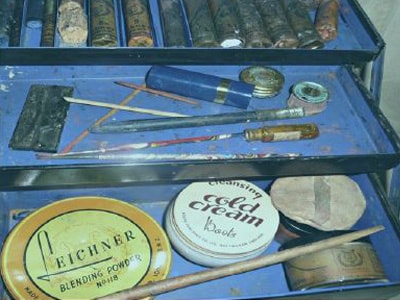
Make-up box containing vintage Leichner stage makeup c.1938 (V&A Museum)
Until the Wagnerian opera singer Ludwig Leichner began to commercially produce greasepaint in 1873, the actor’s make-up arsenal was limited to a basic kit including white lead, lard, burnt cork, ashes, Indian ink, white chalk, black crayon and carmine.
Actors in the all-male companies of Shakespeare’s Globe used Ceruse, a lethal mixture of white lead and vinegar or powdered hog’s bones and poppy oil to perfect the flawless complexions of their Juliets and Titanias. They also crushed pearls into a powder to add shimmer in the candlelight which illuminated the stage, putting today’s extravagant Hollywood beauty regimes to shame.
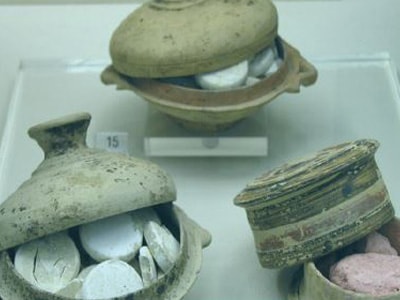
Bowls showing tablets of make-up powder made from lead and carbon hydroxide found in a tomb in ancient Greece c.5th century BC (Kerameikos Archaeological Museum)
Make-Up in Ancient Egypt
Egyptians used cosmetics regardless of sex and social status, for both aesthetic and therapeutic reasons. Even small tombs were found to contain cosmetic jars and makeup pallets amongst the items buried alongside them for the journey into the afterlife.
Although beautification seems to be a major factor in the application of makeup, it was also thought to have magical properties and was regarded as a sign of holiness. Red ochre and henna were used for lips, cheeks hair and fingernails, but the look of the period is defined by the strong brow and eyeliner; eye make-up being used as early as 4000BC.
Egyptians used two main types of eye make up; crushed green malachite and kohl. Malachite, (a mineral pigment) was from Sinai, considered the spiritual home of Hathor, goddess of beauty, joy, love and women and the wearing if it may have conveyed her protection. Kohl is still the eye paint of choice in Middle-Eastern countries today. In ancient Egypt it was made by grinding galena – a gray lead ore, and soot. Ancient Egyptian physicians prescribed the use of kohl against eye diseases and galena has been found to contain disinfectant qualities, it is also a deterrent against flies.
The outlining of the eye was thought to invoke the eye of Horus, god of the sky and the sun, to act as a personal protective amulet, which, once applied, could not be lost or misplaced, thereby transforming make-up application from an everyday activity into a personal, sacred and protective ritual.
Image below: L-R – Eye of Horus pendant, showing distinctive Egyptian eye make-up. Galena, used to make the black and dark gray shadow called Mesement. Goose fat, used as a binding agent.

Akhnaten designs
Kevin Pollard designed the costumes and make up for the production of Akhnaten. His designs were inspired by images from the period which he then reimagined.
These images are early makeup designs for Akhnaten, Nefertiti and Queen Tye.
